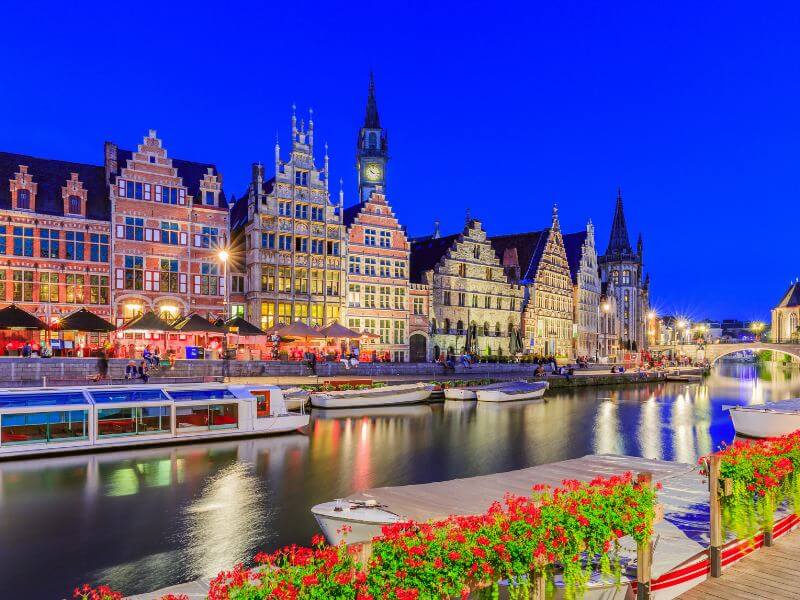
- - Updated on
Home » Visit Gravensteen Castle, a.k.a Castle of the Counts
Visit Gravensteen Castle, a.k.a Castle of the Counts
Nestled in Ghent, Belgium’s heart, Gravensteen Castle is a magnificent testament to medieval architecture and history. Also known as the “Castle of the Counts,” this imposing fortress has witnessed centuries of tumultuous events since its construction in the late 12th century.
Initially built by Count Philip of Alsace, Gravensteen symbolized power and protection, embodying the strength and authority of the Counts of Flanders. Its thick stone walls, fortified towers, and strategic position overlooking the River Lys make it a quintessential example of medieval military design.
Today, Gravensteen Castle invites visitors to step back in time and explore its grand halls, battlements, and even a chilling torture chamber, offering a vivid glimpse into Ghent’s past and rich heritage.
This iconic landmark continues to captivate and inspire, standing proudly as a relic of Belgium’s storied history. It is one of the most breathtaking places in Belgium.
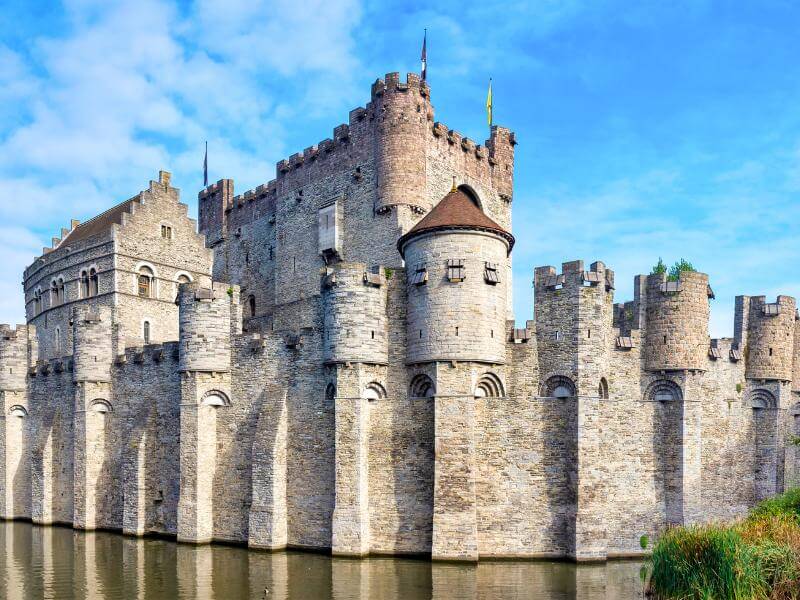
The History of Gravensteen Castle
Gravensteen Castle, an iconic medieval fortress, stands proudly in the city of Ghent, Belgium. Its name, “Gravensteen,” translates to “Castle of the Counts,” reflecting its origins as the residence of the Counts of Flanders. This historic landmark is a must-see for tourists and a symbol of Ghent’s rich and tumultuous past.

Origins and Construction
Gravensteen Castle was built by Count Philip of Alsace in the late 12th century, around 1180. He constructed it on the site of an earlier wooden fort, ensuring the new castle was made of stone for better defense. This medieval castle was designed as a stronghold to protect against invaders and assert the count’s dominance over the region.
The castle’s architecture is typical of the medieval period, characterized by thick stone walls, narrow windows, and formidable towers. It features a large keep serving as the primary residence and administrative center. The surrounding walls and towers were designed to provide maximum defense against any siege.
Medieval Significance
During the medieval period, Gravensteen was more than just a military fortress. It was the administrative heart of the County of Flanders. The counts used it as their residence and symbol of their authority. The castle also housed a court of justice, where legal matters were settled, often in a rather brutal manner by today’s standards.
The great hall was used for banquets and official gatherings inside the castle. The castle’s chapel provided a place for worship, reflecting the intertwined nature of religion and governance during the medieval period. The castle also had a dungeon, where prisoners were kept, and a torture chamber, remnants of which can still be seen today.
Visiting Gravensteen Castle: Practical Information & Tickets
Before you visit Gravensteen castle in Ghent, there are a few things to remember. The castle is open every day, but hours can vary, so it’s a good idea to check the schedule beforehand. Tickets can be purchased at the entrance, but buying them online in advance can save you time. The castle is busiest during weekends and holidays, so planning your visit for a weekday can make for a more relaxed experience.
To get to Gravensteen Castle from the city center of Ghent, you can easily walk as it’s only about a 10-minute stroll. Head towards Sint-Veerleplein, following the signs for the castle. Alternatively, you can take tram lines 1 or 4, which stop near the castle, making it an accessible and convenient destination.
Admission fees for Gravensteen Castle 2024:
- Adults: 13 euros
- Children (13-18 years): 2.70 euros
- Groups of 15 people or more: 11 euros per person
- Children (up to 12 years): Free
The visit can take a few hours, especially if you plan to explore every nook and cranny. Guided tours are also available, which can enhance your understanding of the castle’s history and architecture. Audio guides in multiple languages provide detailed narratives, allowing you to explore independently.
Wear comfortable shoes, as the castle has many stairs and uneven surfaces. I learned this the hard way by not wearing the proper shoes. I fell downstairs while walking into the dungeon, haha! So, just be aware of that.
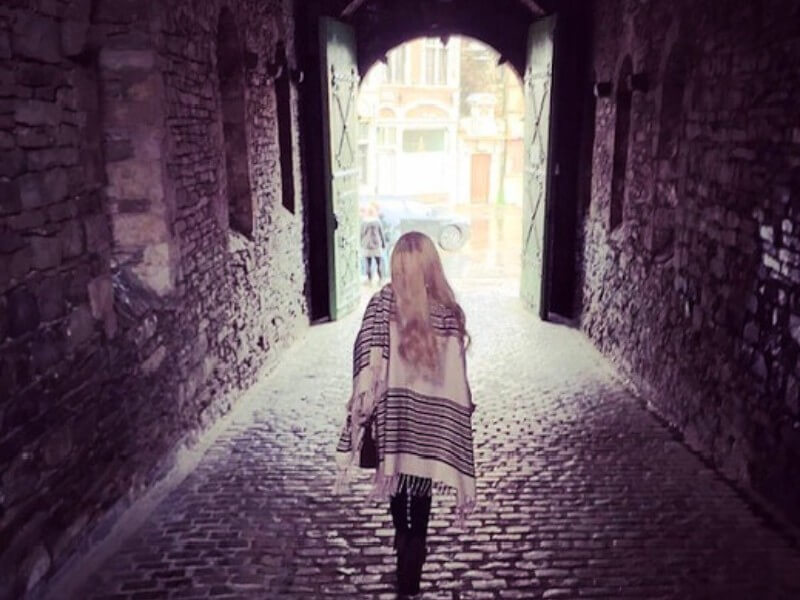
Additional free admissions include Ghent residents on Sunday mornings and during the Ghent Festival in July, caregivers accompanying a visitor with a disability, and several other specific groups such as members of the ICOM and Flemish Museum Association.
Decline and Transformation
By the 14th century, the region’s political landscape had begun to change. The counts moved their residence to more comfortable and modern accommodations, and Gravensteen’s importance as a military fortress waned. Over time, the castle fell into disrepair. It was repurposed for various uses, including as a courthouse and a prison.
In the 19th century, the castle was even used as a cotton factory. This industrial use further degraded the medieval structure. The city of Ghent recognized the historic value of Gravensteen, and efforts to restore and preserve it began in the late 19th and early 20th centuries.
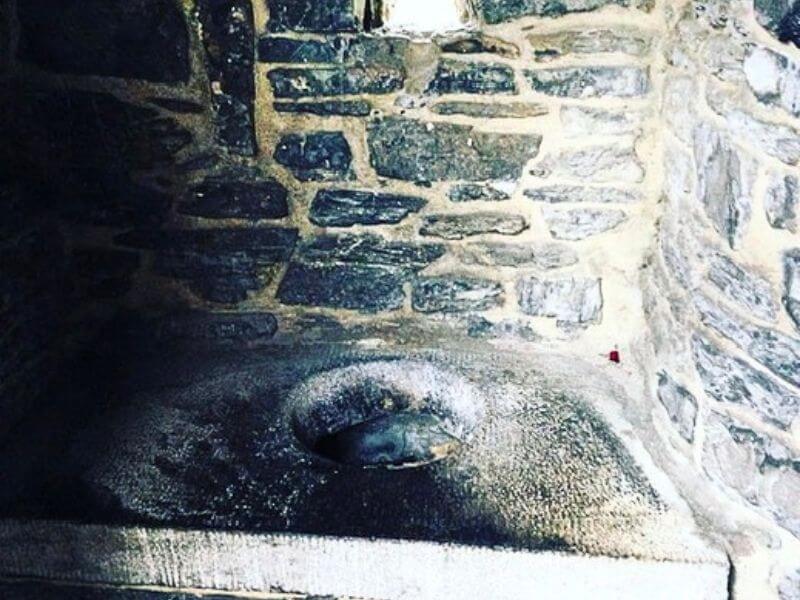
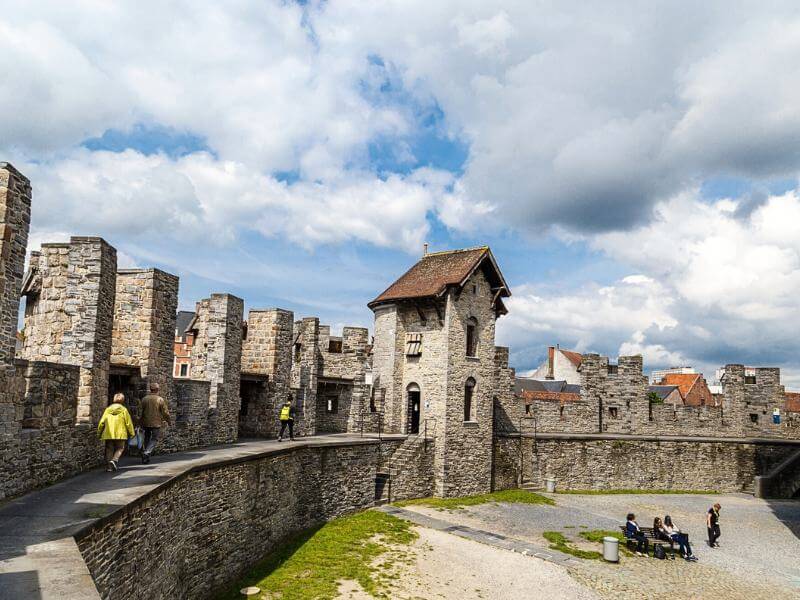
Restoration and Preservation
The restoration of Gravensteen Castle was a significant undertaking. The goal was to preserve its medieval character while making it accessible to the public.
Architects and historians worked meticulously to restore the castle’s original features, using historical records and archaeological findings as guides.
Today, Gravensteen is a beautifully preserved example of a medieval castle. Visitors can explore the keep, climb the towers, and walk along the battlements. The castle’s interior has been restored to reflect its medieval origins, with period furnishings and exhibits that tell the story of its history.
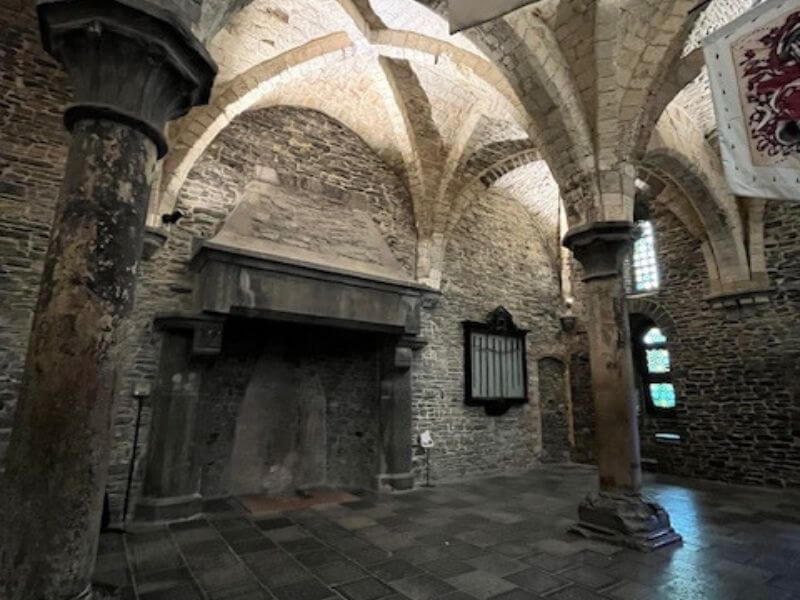

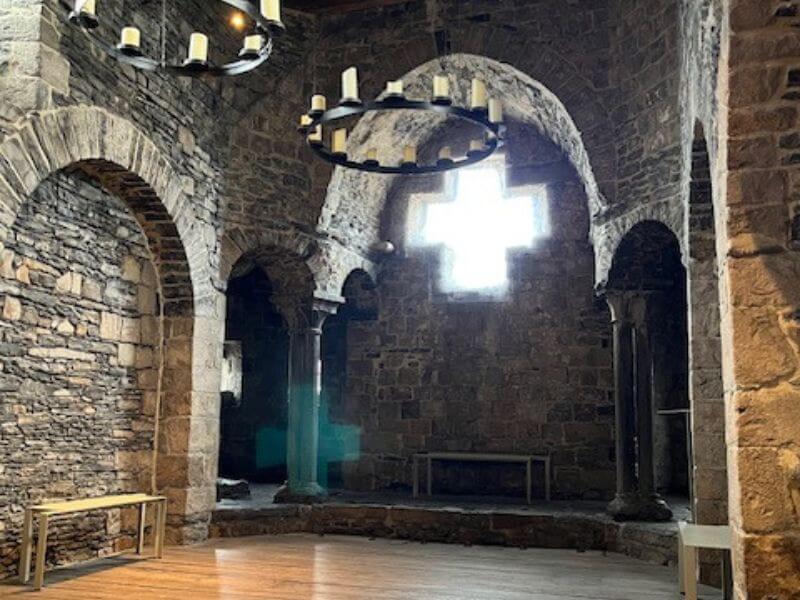
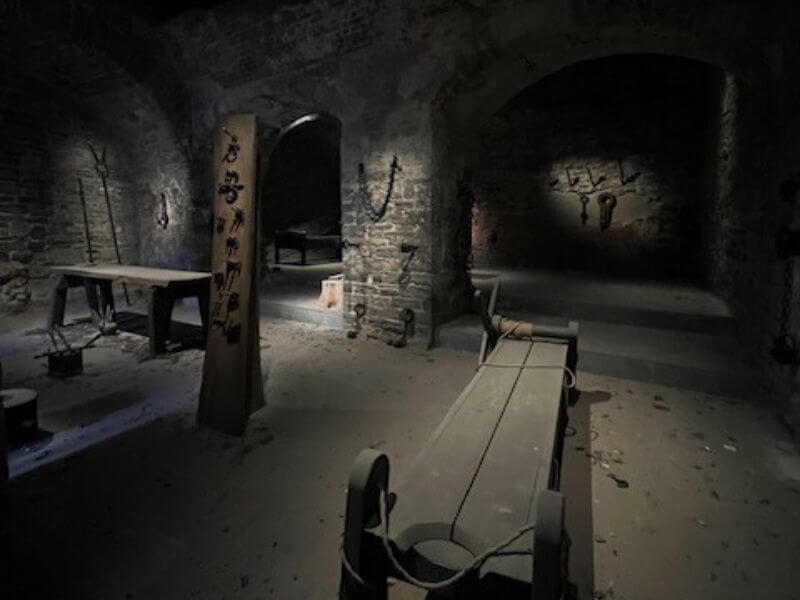
Modern-Day Gravensteen
At present, Gravensteen Castle is one of Ghent’s top tourist attractions. It offers a fascinating glimpse into medieval life and the history of Flanders.
The castle is open to the public year-round, and visitors can take guided tours or explore independently.
The castle’s torture chamber draws particular interest with its grim exhibits, though it may not be for the faint-hearted.
The views from the towers provide stunning panoramas of Ghent, connecting the past with the present in a visually striking way.
The Castle’s Impact on Ghent
Gravensteen Castle is more than just a tourist attraction; it symbolizes Ghent’s rich history and cultural heritage. It has played a central role in the city’s development over the centuries.
Its presence is a reminder of the city’s medieval past and the importance of the Counts of Flanders in shaping the region’s history.
The castle’s imposing structure and central location make it a focal point in Ghent. It is a landmark that residents and visitors can look to as a tangible link to the past.
The preservation of Gravensteen has also spurred interest in other historical sites in the city, promoting a broader appreciation for Ghent’s cultural heritage.
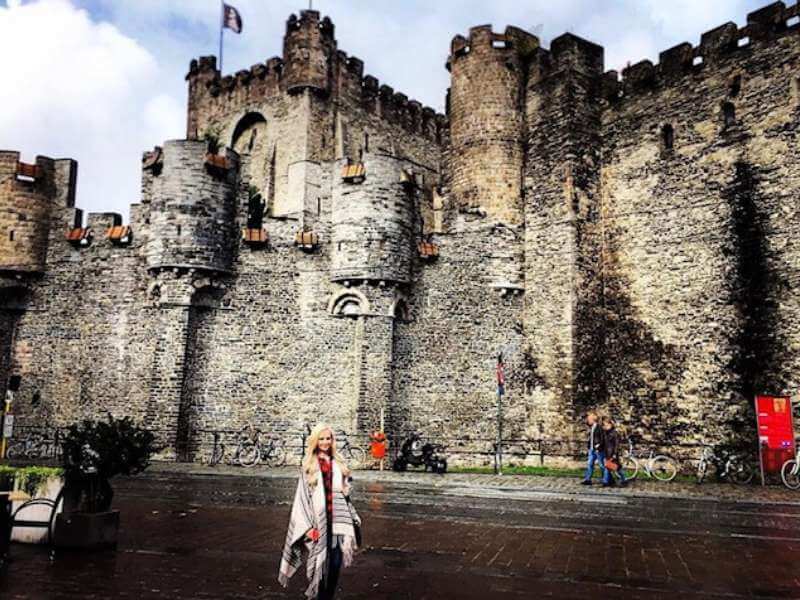
Visiting Gravensteen
For those planning to visit, Gravensteen Castle is easily accessible from the city center of Ghent. It is located near the historic district, making it a convenient stop on a walking city tour. The castle is open most days, with extended hours during peak tourist season.
Visitors are encouraged to explore the castle’s many rooms and exhibits. Audio guides and informational plaques provide context and background, enhancing the visitor experience. There is also a gift shop where visitors can purchase souvenirs and books about the castle’s history.
What to Expect When Visiting Gravensteen Castle
Visiting Gravensteen Castle is like stepping back in time to the Middle Ages. This gem in the heart of Ghent, Belgium, offers a rich historical experience that captivates visitors worldwide. Here’s what you need to know before visiting this remarkable sight.
Arrival and Entrance
Gravensteen Castle is easily accessible from the city center of Ghent. As you approach, you’ll be struck by its imposing stone walls and majestic towers, reflected in the serene waters of the surrounding moat. The entrance is near a picturesque canal, adding to the medieval ambiance. With its well-preserved structure, the sight of the castle in Ghent sets the tone for an unforgettable journey into history. Once inside, you’ll journey through centuries of history from the moment you cross the drawbridge.
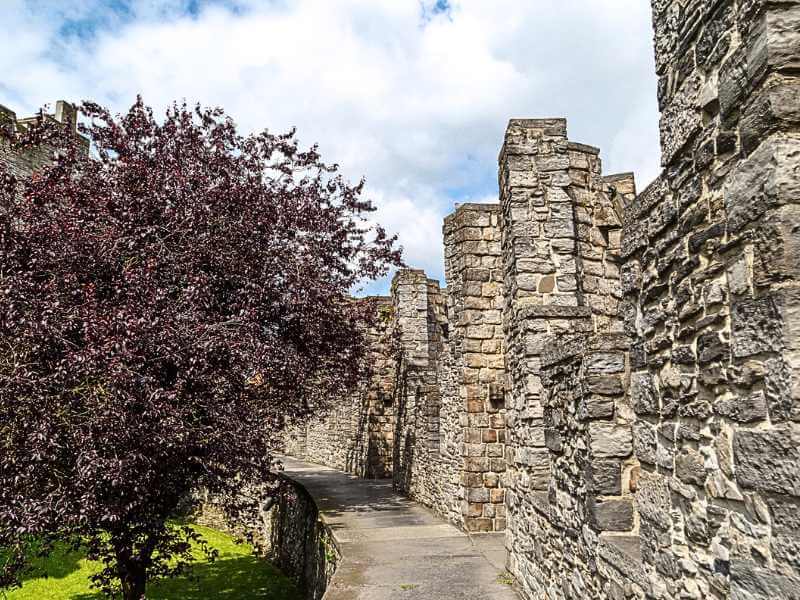
Exploring the Castle
One of the first things you’ll notice as you walk around the castle is its impressive architecture. The thick walls, narrow windows, and high towers are characteristic of medieval fortresses, designed for defense and as a symbol of power.
With its towering presence, the main keep dominates the structure and offers stunning views of Ghent from the top. Climbing the spiral staircases, you can feel the weight of history underfoot.
Throughout the castle, you’ll encounter various rooms that have been meticulously restored to reflect their original medieval state. The great hall, with its high ceilings and grand fireplace, gives you a sense of the castle’s former grandeur, where feasts and important gatherings would have taken place.
The chapel, though smaller, provides a quiet, reflective space, reminding visitors of the religious significance of such a residence. The living quarters and armories throughout the castle give a glimpse into the daily life of its medieval inhabitants.
The Museum Experience
Gravensteen Castle also serves as a museum, showcasing a variety of exhibits that bring its history to life. Walking around, you’ll find displays of medieval armor, weapons, and other artifacts that tell the story of the castle and its inhabitants. These exhibits include detailed descriptions of how the castle was used throughout different periods, providing a comprehensive view of its historical significance. Informational plaques and interactive exhibits help to give context and make the experience engaging for visitors of all ages.
The museum also features an impressive collection of coins, manuscripts, and other relics from the Middle Ages, offering a broader perspective on the era. Temporary exhibitions are also held throughout the year, focusing on various aspects of medieval life and the history of Ghent. This dynamic approach ensures something new to learn and see at the castle.


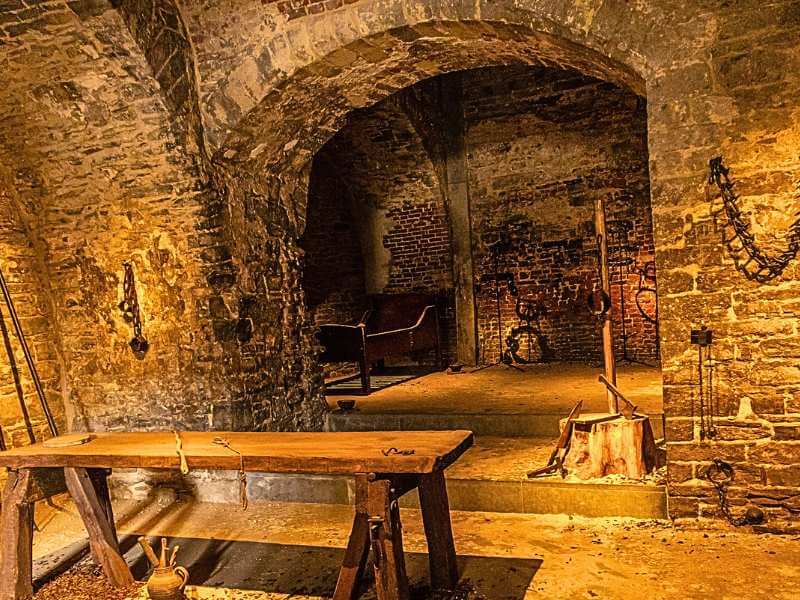
The Torture Museum
One of the most intriguing parts of Gravensteen Castle is the torture museum. This exhibit, located in the dungeon, features an array of medieval torture devices. While it’s not for the faint-hearted, it offers a grim yet fascinating look into the darker aspects of medieval justice. The eerie ambiance of the dungeon enhances the chilling effect of the displays, making it a memorable part of the visit.
The torture museum provides detailed explanations of the devices and the historical context in which they were used. This includes the legal and social framework of the Middle Ages, shedding light on how justice was administered in those times. The authenticity of the exhibits is striking, and it provides a sobering reminder of the harsh realities of medieval life.
Walking the Battlements
A highlight of any visit to Gravensteen is the chance to walk around the castle’s battlements. The views from here are spectacular, offering a panoramic view of the city of Ghent and its canals.
The battlements are well-preserved, allowing visitors to imagine the vantage points used by medieval guards. It’s easy to picture them watching the city and the surrounding countryside, ready to defend the castle against any threats.
Walking the battlements gives you a unique perspective on the castle’s strategic importance. The sight of the city from these heights is breathtaking, especially on a clear day. The battlements also provide access to the castle’s towers, offering different views and historical insights. It’s a must-do for anyone visiting the castle, combining history with stunning scenery.
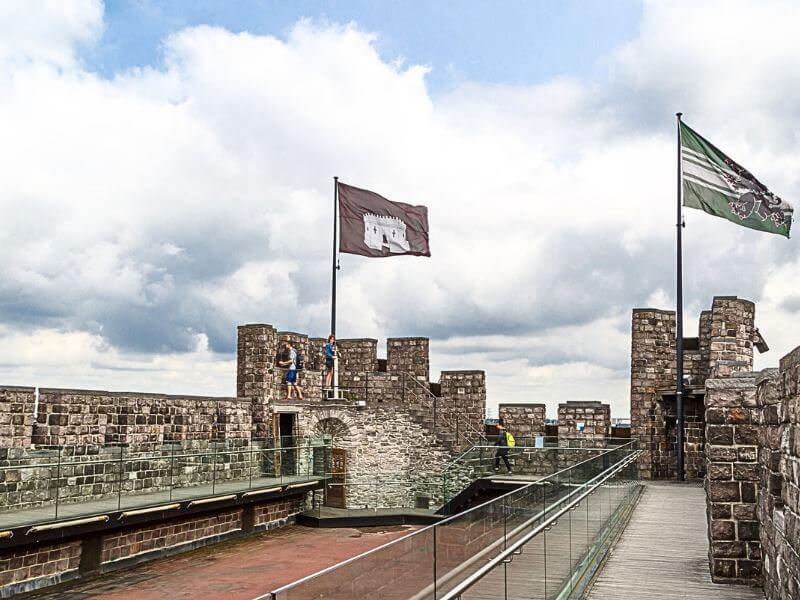
Events and Activities
Gravensteen Castle is not just a static museum; it’s a lively venue for various events throughout the year. Medieval reenactments, festivals, and educational programs dynamically bring the castle’s history to life. These events are delightful for families and help to make the historical experience more immersive. Watching actors in period costumes, participating in medieval crafts, and enjoying traditional music and dance make these events a highlight of any visit.
During the summer, the castle’s courtyard becomes a stage for outdoor theater performances and concerts. These cultural events add a contemporary dimension to the historical setting, uniquely blending old and new. The castle also hosts lectures and workshops that delve deeper into medieval history and archaeology, enriching history enthusiasts’ experiences. Whether you’re attending a medieval banquet or a modern concert, these activities make Gravensteen a vibrant cultural hub.
Gravensteen Castle is a remarkable example of medieval architecture and a testament to the history of Ghent and Belgium. Its stone walls have witnessed centuries of change, from its origins as a count’s residence to its modern role as a historical monument. The castle’s story is one of resilience and adaptation, mirroring the city it calls home.
For history enthusiasts, architecture buffs, or anyone interested in the medieval period, Gravensteen is a must-see. Its blend of historical significance, architectural beauty, and engaging exhibits make it a fascinating destination. Walking through its halls and climbing its towers transports you back in time, allowing you to gain a deeper appreciation for the rich tapestry of history that has shaped this remarkable castle and the city of Ghent.

Editor: Hi! I’m Allie, and welcome to my travel blog. Born and raised in Texas and moved to Germany 8 years ago on a quest for self-discovery. Follow me on this great adventure as I’ll be your trusted travel guide, sharing my experiences, insights, and tips from my journeys around the globe.
Related Articles:

